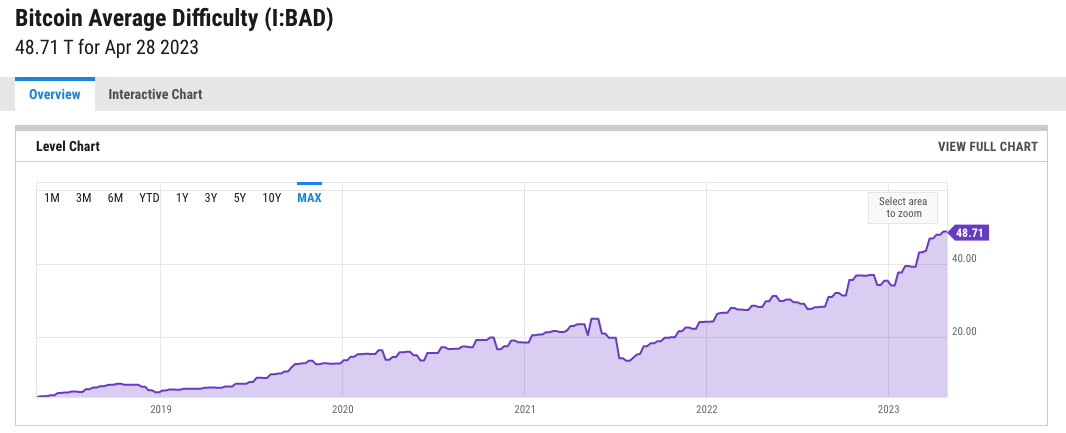Bitcoin mining, a critical facet of the cryptocurrency ecosystem, has again seized the spotlight.
Earlier today, crypto analyst “Crypto Rand” highlighted a significant rise in Bitcoin Mining Difficulty – a surge of over 30% since January 13, 2023.
And a couple of hours ago, the world’s largest crypto exchange by trading volume, pointed out that Bitcoin mining difficulty had reached an all-time high of 48.71 trillion.
And as you can see from the chart below, they are correct:

This substantial uptick warrants a closer look at the concept of Bitcoin Mining Difficulty, its measurement, its potential influence on Bitcoin’s price, and its implications for small-scale miners.
Bitcoin Mining Difficulty measures the complexity of the mathematical problems miners must solve to add a new block of transactions to the blockchain. The difficulty level adjusts approximately every two weeks to maintain a block discovery rate of roughly every 10 minutes, irrespective of the total computational power within the network. This level increases with more miners and decreases when miners exit, to ensure a consistent mining pace.
The recent 30% surge in difficulty could be attributed to various factors. Primarily, an influx of miners driven by Bitcoin’s high market value could increase competition, subsequently hiking up the difficulty. Additionally, advancements in mining hardware technology can boost the network’s overall computational power, thereby escalating the difficulty level.
Notably, the mining difficulty can indirectly influence Bitcoin’s price. When difficulty rises and mining costs increase, miners may sell their Bitcoin rewards to cover these costs, potentially increasing market supply. If the supply influx isn’t matched by demand, the price may experience downward pressure.
However, an increased difficulty level could also signal a robust and secure network, attracting more investors and potentially driving up Bitcoin’s price. It’s a delicate balance, and the correlation isn’t always straightforward, making it a fascinating aspect of monitoring Bitcoin market dynamics.
For small-scale miners, a rise in difficulty can pose significant challenges. As operational costs increase, profitability may become elusive, potentially forcing them to halt operations. Hence, Crypto Rand’s observation underscores the need for miners to keep a pulse on these shifts.








